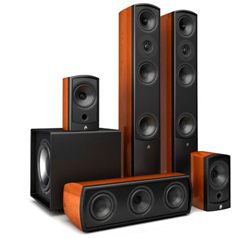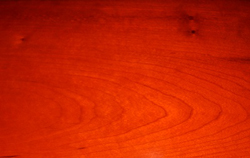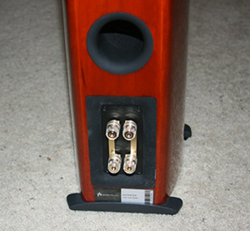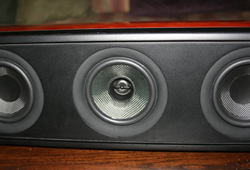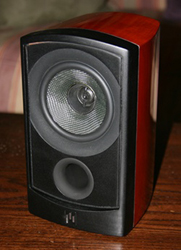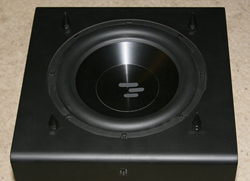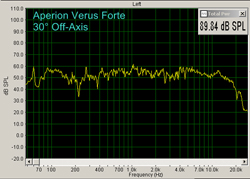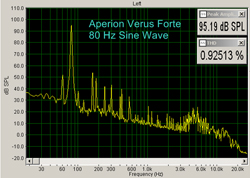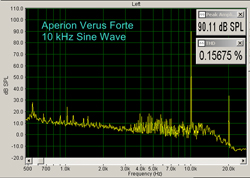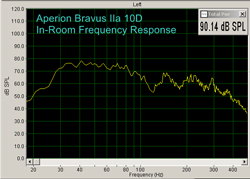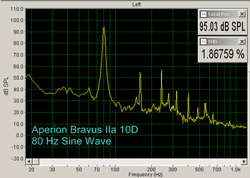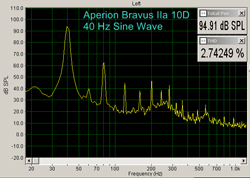Introduction to the Aperion Verus Forte Home Theater System
The history of Aperion Audio goes all the way back to the turn of the Century, the 21st Century that is. That is a fairly long history for an Internet-Direct audio company.
Aperion Audio hails from Portland, Oregon where they have built a reputation for high quality speakers and audio accessories. Their business model of direct sales over the internet holds the promise of high quality at value prices. This is one of their founding principles if not the founding principle for the company. And they don’t sell cheapo, affordable speakers which is evidenced by Aperion’s confidence to back their products with an attention-grabbing 10-year warranty.
Aperion is also rightfully proud of their customer service that starts with helping their customers pick the right system for their needs, to their very informative website sans the annoying pop-ups right on through to great communication, quick service and a very cheery bedside manner.
The system I’m evaluating here is from Aperion’s all-new, upscale speaker line. The new line is dubbed the Verus and they offer improved drivers, crossovers and an upgraded look in either of two gorgeous finishes – high gloss cherry or high gloss piano black.
My review system is a 5.1 system that is built around the Verus Forte towers. These are the smaller of two tower models in the new speaker line.
APERION VERUS FORTE HOME THEATER SYSTEM SPECIFICATIONS
Mains
Verus Forte Tower
- Design: Three-way, Ported
- MFR: 53 Hz-20 kHz +/-3dB
- Drivers: One 1″ Silk Dome Tweeter, One 4.25″ Kevlar Midrange, Two 4.25″ Kevlar Woofers
- Power Handling: 300 W
- Sensitivity: 90 dB
- Nominal Impedance: 6 Ohms
- Crossover Frequencies: 1,800 Hz and 800 Hz
- Dimensions: 35″ H x 6″ W x 8.25 D
- Weight: 30 Pounds/each
- Finishes: High Gloss Black and High Gloss Cherry
- MSRP: $545.00/each
Center
Verus Forte Center
- Design: Two-way, Ported
- Drivers: One 1″ Silk Dome Tweeter, One 4.25″ Kevlar Midrange, One 4.25″ Kevlar Woofer, One 4.25″ Passive Radiator
- MFR: 72 Hz-20 kHz +/-3dB
- Power Handling: 250 W
- Sensitivity: 85 dB
- Nominal Impedance: 6 Ohms
- Crossover Frequency: 1,700 Hz and 250 Hz
- Dimensions: 6.2″ H x 19″ W x 8″ D
- Weight: 15 Pounds
- Finishes: High Gloss Black and High Gloss Cherry
- MSRP: $350.00/each
Surrounds
Verus Forte Satellite
- Design: Two-way, Ported
- Drivers: One 1″ Silk Dome Tweeter, One 4.25″ Mid/Woofer
- MFR: 80 Hz-20 kHz +/-3dB
- Power Handling: 150 W
- Sensitivity: 85dB
- Nominal Impedance: 6 Ohms
- Crossover Frequency: 1,500 Hz
- Dimensions: 9″ H x 5″ W x 5.7″ D
- Weight: 6.5 Pounds
- Finishes: High Gloss Black and High Gloss Cherry
- MSRP: $175.00/each
Subwoofer
Bravus IIa 10D
- MFR: 28-350 Hz +/-3dB
- Amplifier Power: 500 W RMS
- Drivers: One 10″ Aluminum Active, Two 10″ Passive
- Inputs: L/R and LFE Line-level RCA jacks, L/R Speaker Level, USB
- Dimensions: 15″ H x 13.5″ W x 13.5″ D
- Weight: 44 Pounds
- Finishes: Black Satin
- Voltage: 110/120 VAC 60Hz, 220 VAC 50/60Hz (Switchable)
- MSRP: $699 USD
- Aperion
- SECRETS Tags: Aperion, Speakers, Towers, Subwoofers
Design and Setup of the Aperion Forte Home Theater System
These are sleek, slim towers with curvaceous cabinets. They are true 3-way designs with a pair of cute little 4-1/4″ Kevlar woofers, a single 4-1/4″ mid with an aluminum phase plug and a 1″ silk dome ring radiator tweeter. All these drivers are new designs and they sound terrific.
Truth be told, this system is designed for smaller rooms than mine. And even with both woofer cones dedicated to reproducing the bass, these two 4-1/4″ drivers only have the same radiating area as a single 6″ driver. But I still got acceptable response down to around 80 Hz at my listening position that’s 12′ from the front speakers. So I’m operating under the assumption that the woofers have capable motor structures.
Besides transient speed and nimbleness, another positive off shoot of the smaller cones is that the cabinet is narrower than most. This fact, in conjunction with the curvy cabinet profile means you have a recipe for better dispersion and imaging. I found the open sound staging to be a signature quality of the Verus Fortes.
The midrange is mounted near the top of the cabinet, above the tweeter. It has an aluminum phase plug and operates over the narrow but critical range between 800 Hz to 1.8 kHz.
Aperion calls this new tweeter an “Axially Stabilized Radiator”. It looks like a ring radiator with an added center pin that is mounted on the small arm that passes over the front of the driver. Here is a quote from the Aperion engineering team, “[With typical ring radiators] there is little to resist [the dome’s] rocking since the entire suspension is located in a single plane. The whole idea of our Axially Stabilized™ tweeter is to attach the diaphragm’s center in a different plane than the ring-suspension in order to restrain this rocking. We see this as an important refinement to the ring radiator type of tweeter . . . The practical significance is that our Axially Stabilized Radiator™ tweeter is especially controlled around its natural resonance frequency, which allows it to operate much deeper into the midrange.” Accordingly, this driver picks up the signal from a low-ish crossover point of 1.8 kHz.
Aperion makes no mention of the crossover topology in the Verus Fortes, but the concept of a true 3-way design avoids many of the complex phase, response and driver interaction problems that are endemic with the more common (these days) 2-1/2 way designs. So kudos goes to Aperion for the 3-way design.
The slim towers come with metal outriggers and floor spikes. They also have the little metal discs to protect hard floors from the ravages of the spikes. I rarely use such discs because they tend to be unstable, but Aperion’s version of the discs looked like they would be fairly stable if you decide to use them. The mounting screws for the bases were different between the two front towers, indicating that they were from different production runs. Over time, the female inserts came loose in the tower that had the shorter screws.
The grilles are cloth-backed metal grilles that are attached by very strong magnets. I wouldn’t expect them to buzz or rattle. I had trouble removing the grilles at first, up until I found out that I could just “bonk” the speaker with the heel of my palm and the grilles would pop off.
The system Aperion sent included a Verus Forte Center speaker and a pair of the Verus Forte Satellites for the rears. I mention these here because they feature a new driver design too – a coincident array that Aperion calls the PhaseSync Driver. This nifty little unit has a 4-1/4″ Kevlar driver with a nested ASR tweeter at the acoustic center. This design lends good timbral consistency across a wide range of seating positions that was particularly noteworthy with the center speaker. These drivers further reinforced the system’s already strong sound staging capabilities.
The sub that Aperion sent along was the Bravus II 10D. This little cube has a 10″ aluminum cone main driver and a pair of side-mounted 10″ passive radiators. The sub is powered by a 500 W RMS plate amp. The sub is pretty basic with limited controls, no EQ but a rugged textured black finish on its sturdy cabinet.
I placed all the speakers in the usual positions for my room – the sub in the front left corner, the towers 10′ apart, the center on a shelf below the screen and the rears on shelves near the rear corners of the room. I found that I got the best results when the tweeters of the front speakers were aimed directly at my cranium. So I toed in the mains to face directly at the center seat and I used the included heavy rubber bases to tilt the center speaker so it was aimed at ear level.
I crossed over the mains at 80 Hz, the center at 100 Hz and the rears at 120 Hz.
Aperion Forte Home Theater System In Use
Right off the bat, I was quite impressed with how articulate the Aperion system was even before any real break-in period. Now these aren’t the first speakers to convey an articulate signature before an appropriate break-in, but they were not articulate at the expense of being etched or hard-edged like many other affordable speakers. So this articulate quality along with the aforementioned sound staging became the sonic signatures for the Aperion Forte system.

I still let the system break in for a few weeks, just for sake of breaking them in and the system benefitted by revealing more inner detail in music. Then I settled in for some serious listening with my copy of the Blu-ray release of La Traviata. This is a 2007 La Scala production of the Giuseppe Verdi opera conducted by Lorin Maazel and starring Angela Gheorghiu, Ramon Vargas and Roberto Frontali.
The Aperion Forte system placed me close to the action, sounding like I was in row 5. The Forte center did well with the vocals, but I didn’t want to push it too hard on this lossless encode with its amazing dynamic range. But the Fortes were showing their mettle and I crept up on the volume little by little until I found myself listening at near live levels when the opera’s sad conclusion played out. There was good off-axis response with a smooth response spectrum that held up no matter where I sat in the room.
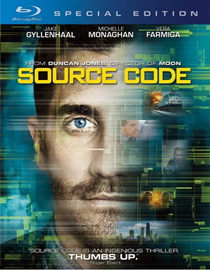
I then watched the Source Code Blu-ray over the Aperion Forte system. In my opinion, Source Code is a very entertaining film with a high replay value much in the way the plot is reminiscent of “Ground Hog Day” with its repetitive scene re-winds/re-do’s.
Each time the train scene re-opened or closed with a bang, the Bravus II 10 D sub impressed me with exceptional output that shook the sofa much more than its size would suggest. This soundtrack has a healthy surround mix too. Normally, direct-radiating surrounds aren’t the greatest at envelopment in my theater, but the little Fortes resemble a point source in their design and were not at all shabby in the envelopment department with acceptable specificity or diffusivity depending on the material.

Next up was the Tedechi Truck Band’s first album, “Revelator” on vinyl. This group features a husband wife team on guitar and vocals. “Revelator” took home a Grammy in 2012 for the Best Blues Album of the Year. It also garnered an armload of Blues Music Awards in 2012. I think these are well-deserved honors and this album has vaulted to the top of my list of favorites for ye olde vinyl playback rig due to the terrific music and musicianship. I also think Susan Tedeschi is the next best thing since Bonnie Raitt. She really is that good.
Played back with Dolby PL II, the Aperion Forte center handled Tedeschi’s voice with good clarity and presence – not nasally or chesty and the sibilants were remarkably clean. Again, the system’s smooth frequency response passed on the warmth of this record. This system did fall short of the best examples out there when it came to the layering of music. The sound was just a bit dimensionally flat.

I closed out my evaluation with The Muppets Blu-ray. This movie is predictable and campy with some extremely banal humor. But there are cameos and guest appearances galore while the music is a total delight throughout. The music, effects and vocals sound excellent on this lossless surround encode, too.
On the music side, the award-winning number “Muppet or a Man” was nothing short of scintillating over the Aperion Forte system. The Forte system is a superior reproducer of sonic details for systems in its price class. This comes with a clean, extended treble too. The Aperion Forte’s really are equally adept at movies and music. That’s not a cliché this time around.
Aperion Forte Home Theater System on the Bench
All the below measurements are in-room response. The frequency response tests were performed at 1-meter and the distortion measurements were on-axis near field measurements.
The on-axis frequency response is fairly smooth from 400 Hz to 16 kHz with minor peaks at 5.5 and 12 kHz. The response below 300 Hz was not as flat due to room interactions. Most modern receivers can compensate for this unevenness.
The off-axis response starts rolling off gradually above 10 kHz and this explains why I preferred them toed in to face directly at the prime listening position.
The 1 kHz tone was produced by the midrange driver and there was just 0.25% THD at 95 dB.
The distortion reading dropped to 0.13% at 95 dB and 250 Hz.
I was quite surprised that the little dual bass drivers were able to achieve 95 dB at 80 Hz with less than 1% THD. This validates my choice of an 80 Hz crossover.
The 5 kHz plot shows a degree of hash in the response, but the distortion measurement is a low 0.12%.
At 10 kHz and 90 dB, the Verus tweeter measures less than 0.16% THD.
This is the in-room plot at 1m on-axis. In the critical range between 30 and 80 Hz, this is the smoothest in-room response I’ve gotten from any sub so far.
At 80 Hz and 95 dB, the THD was 1.87%.
This is still very low distortion for a compact sub.
The Bravus sub reached its practical output limit at 30 Hz and 95 dB.
Conclusions about the Aperion Forte Home Theater System
The Aperion Verus Forte system impressed me a lot. It delivered good all-around performance with cinema and music. The speakers had an articulate quality that communicated a lot of information from my high resolution sources. And the slim tower design, combined with the coincident array in the center produced a wide and uniform soundfield. The level of performance and the overall aesthetic available in the Aperion Forte system is so much more than its price would suggest. I recommend this nifty little system for someone with a small to medium size room who wants to maximize their purchasing power.
Don’t forget that Aperion offers free shipping and a no risk guarantee on all orders. This means you can try the Fortes at home in your own system before making a final decision. If you decide to hang on to the speakers, then you can rest assured that Aperion backs these speakers with a 10-year warranty. There’s not much downside in all that.



